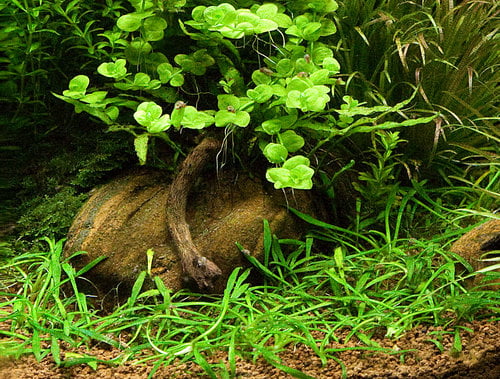Discover the essential steps to properly prepare driftwood for your aquarium to create a natural and aesthetically pleasing environment for your aquatic pets.
Selecting the Right Driftwood
When selecting driftwood for your aquarium, it's important to choose pieces that are suitable for the size and style of your tank. Look for driftwood that is sturdy and has interesting shapes and textures. Avoid pieces that have sharp edges or are decaying.
Consider the type of wood as well. Some types of wood, like mopani and Malaysian driftwood, are popular choices for aquariums as they release fewer tannins compared to other types. Tannins can discolor the water and lower the pH levels, which may not be ideal for all aquatic species.
Cleaning and Sanitizing Driftwood
Before adding driftwood to your aquarium, it's crucial to clean and sanitize it properly. Start by scrubbing the driftwood with a stiff brush to remove any dirt, algae, or debris. Rinse it thoroughly under running water.
Next, soak the driftwood in a bucket filled with water and a mild bleach solution. Use one part bleach to ten parts water. Let the driftwood soak for 24 to 48 hours, ensuring that it is fully submerged. This will help kill any harmful bacteria or parasites that may be present on the wood.
After the soaking process, rinse the driftwood again under running water to remove any traces of bleach. You can also let it soak in clean water for a few more hours to ensure that all the bleach is removed.
Soaking Driftwood to Remove Tannins
Many types of driftwood release tannins when submerged in water. Tannins can turn the water yellow or brown and may lower the pH levels. To remove tannins and minimize their effect on your aquarium, it's recommended to soak the driftwood before adding it to the tank.
Fill a large container or bucket with water and place the driftwood inside. Let it soak for several days, changing the water daily. This process helps leach out the tannins from the wood.
You can test the water's color during the soaking process. Once the water remains clear or only has a slight tint, the driftwood is ready to be moved to the aquarium.
Boiling Driftwood for Sterilization
Boiling driftwood is another method to sterilize it and remove any remaining bacteria or parasites. It's especially important if you collected the driftwood from natural sources.
Start by thoroughly rinsing the driftwood to remove any loose debris. Then, place it in a large pot and fill it with enough water to fully submerge the wood. Bring the water to a boil and let the driftwood simmer for at least one hour. This will ensure that any harmful organisms are killed.
After boiling, remove the driftwood from the pot and let it cool down. Rinse it again under running water to remove any boiled debris. Now, the driftwood is ready to be added to your aquarium.
Adding Driftwood to Your Aquarium
Before adding the driftwood to your aquarium, make sure it fits well and doesn't overcrowd the tank. You can position it in a way that creates hiding spots or interesting structures for your aquatic pets.
Place the driftwood in the desired location and secure it firmly to prevent it from floating or shifting. You can use aquarium-safe silicone or attach it to rocks or other decorations for stability.
Finally, fill the tank with water and observe the water parameters closely for the first few days. Driftwood may slightly affect the pH levels and water hardness, so monitor these parameters and make adjustments if necessary.
Adding driftwood for baby fish to your aquarium not only enhances its visual appeal but also provides natural hiding places and surfaces for beneficial bacteria to grow. It creates a more natural and stimulating environment for your aquatic pets.
Additional Resources:
All About Aquarium Driftwood
Choosing The Best Driftwood
Best Live Plants For Your Aquarium



.jpg?width=352&name=Live%20Aquarium%20Plant%20FA%20(1).jpg)

Leave a Comment